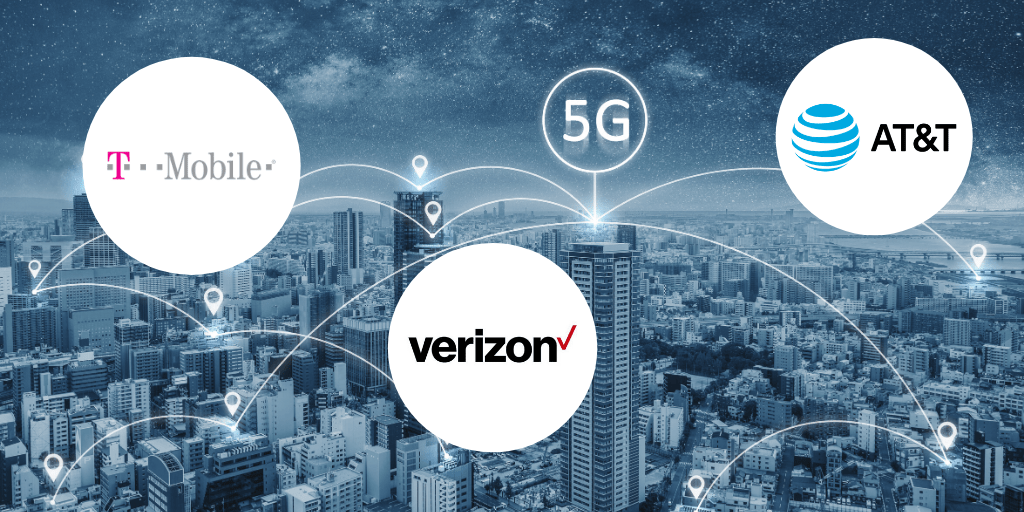Is the Current Hype Around 5G Valid?
Recent 5G network launches are bringing a resurgence of excitement in the media about 5G’s capabilities. The marketing-speak is a bit amped-up with the promotion by three US network operators due to their excitement about their new networks. Is the hype valid?
What You May Not Know About Coverage Vs Speed
The coverage reach of a wireless site depends a lot on the choice of spectrum that the operator is using. Since the length of the wave has a direct correlation to the wave’s propagation factors, a lower frequency wave has a longer wavelength and will better penetrate buildings and extend signal reach in comparison to higher spectrum waves. T-Mobile is using 600 MHz spectrum to carry their nationwide 5G service. This frequency is the lowest commercial frequency band, and since this spectrum’s wavelengths are longer, T-Mobile is able to cover more area with fewer 5G cell sites than its competition. AT&T recently turned-up 5G in several markets using their 850 MHz spectrum, and this spectrum is also providing good 5G coverage and penetration. So, from a coverage perspective, T-Mobile and AT&T are allowing subscribers using the new compatible 5G devices to have 5G connectivity. But are the service speeds provided in these lower bands meeting the promises of 5G’s enhanced mobile broadband and ultra-low latency? As hype-buster number 1, I would say not likely.
Is Today’s 5G Really Providing EMBB Services?
It depends. Operators providing service in the higher frequency bands, like the millimeter wave spectrum, can deliver on this tenant. These bands of spectrum have much shorter wavelengths, which transfers data at much faster rates than signals using the longer wavelengths in the lower spectrum bands. Another reason that millimeter wave spectrum is desirable is the amount of spectrum that is available. There are not many users in these high frequency bands, so allocating licenses is easy and provides the opportunity to create larger channels, up to 100 MHz in size. Much like a 10-inch water pipe can carry up to ten times more water than a 1-inch water pipe, a 100 MHz channel can transport significantly more traffic than the 10 or 20 MHz channels that are primarily used in the lower frequency bands.
Two US operators are deploying 5G in the mmWave spectrum and are achieving gigabit per second speeds for users. Verizon indicates that its 5G Ultra Wideband service enables peak data rates of 10 Gbps, while AT&T says its 5G+ service can deliver peak data rates of 2 Gbps. The faster throughput and larger capacity mean that that subscribers who use these networks can conduct their business much faster…when they have coverage, which is the challenge of using the mmWave spectrum.
mmWave spectrum has shorter wavelengths, and while they can transfer data much faster, transmissions using these waves do not propagate as effectively as ones transmitted using longer wavelength, lower frequency spectrum. This attribute means that the 5G network operators using mmWave spectrum will be deploying and operating networks with many more cell sites to provide the comparable coverage for their networks. So, the number of mmWave cells directly indicates the effective coverage area for that 5G service offering. I consider this a hype-buster; 5G enhanced mobile broadband premise is contingent upon those network operators deploying sufficient cell density to provide coverage, but these coverage areas are not widely available from operators.
The 5G Hype Is Not Over-Stated
While the current media promotions about 5G coverage and speeds might be a bit strong, the good news is that even the low frequency deployments are providing higher speeds for users than most 4G connections. As well, the high-bandwidth throughputs enabled by mmWave-based 5G, while deployed in limited downtown areas and large venues that offer line-of-site connectivity between users and antennas, these locales are demonstrating that 5G are well on the way to delivering on its promises.
But 5G is more than just bringing faster video downloads to consumers. Network operators are now demonstrating how 5G can operate as a private network and how it can help vehicle to anything communications. And these are just a few of the traits that will gauge the success of 5G.
Is the Current Hype Around 5G Valid?
3 Mins read

